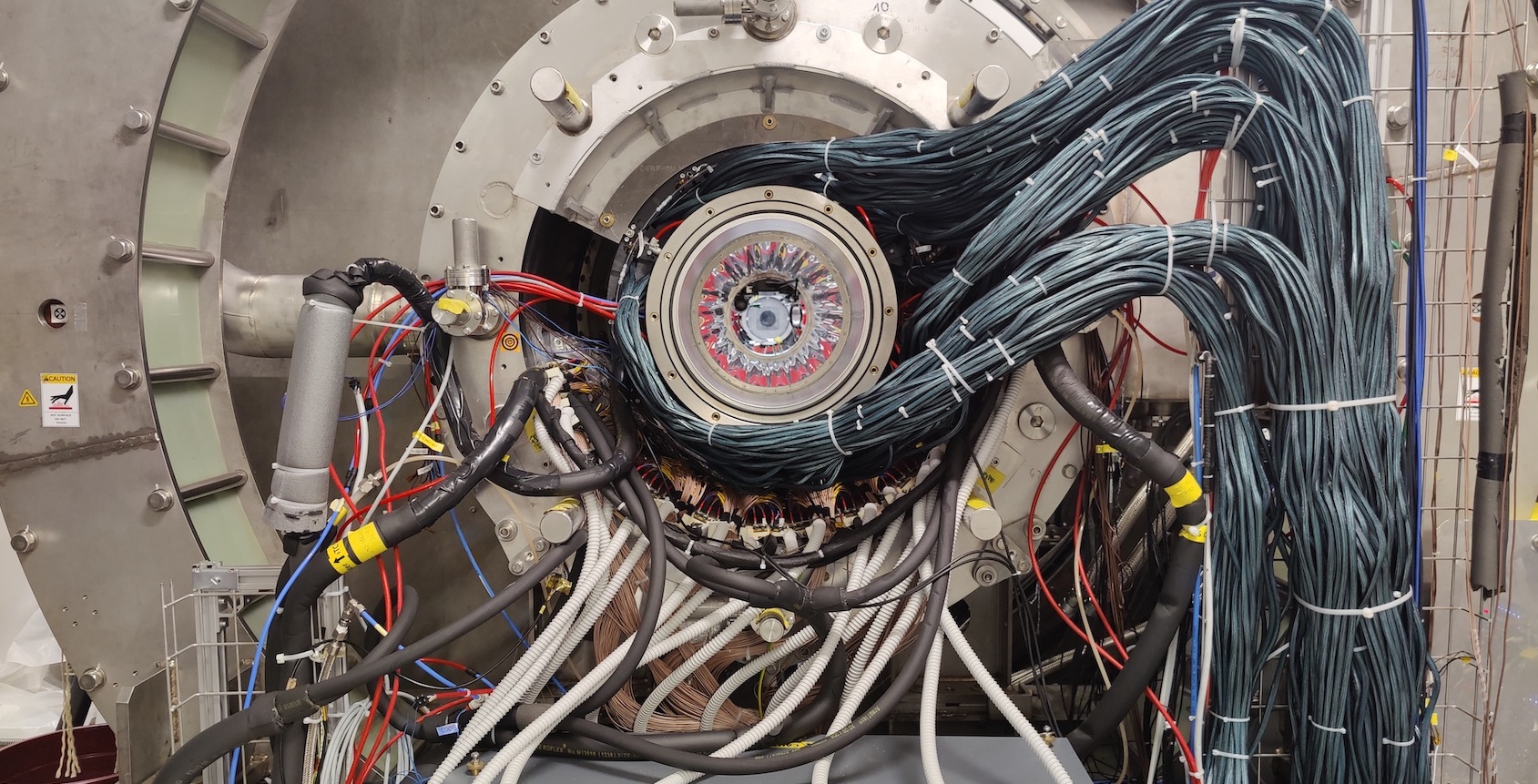
The scientific collaboration of the MEG II experiment, of which INFN is a member, presented its first result on the search for a new hypothetical elementary particle, a boson called X17, at a scientific seminar at the Paul Scherrer Institut (PSI) in Switzerland on 13 November. The result, based on the analysis of data collected in 2023, is reported in a paper published on arxiv and submitted to the European Journal of Physics C.
The MEG II detector, currently in data acquisition at the PSI laboratory, searches for new physics phenomena, and is specifically designed to search for the decay of a positive muon into a positron and a photon, but it can also study other phenomena, such as the production of the hypothetical X17 particle. Hence the implementation of this new measurement, proposed by the researchers of the Italian group, who then coordinated its design and implementation, and the subsequent analysis of the data, thanks to which a new limit on the existence of the X17 particle was placed, since no interesting signal emerged.
The X17 particle was theorised a decade ago to explain the observation, made by an experiment at the ATOMKI laboratory (in Debrecen, Hungary), of an anomalous structure in the distribution of the opening angle in the trajectories of electron-positron pairs produced in a proton-induced nuclear reaction on a lithium target. This anomaly was thus interpreted as the production and subsequent decay of a hypothetical particle, which was given the name X17 because of the value of its mass (17 MeV). Subsequently, using the same experimental technique, similar excesses, compatible with this particle, were also observed in processes involving helium and carbon nuclei. The processes examined in the MEG and ATOMKI experiments are complex nuclear reactions, which must be analysed with very accurate theoretical nuclear dynamics calculations. This is now possible because of recent developments in the understanding of nuclear forces, to which many INFN researchers have made important contributions.
The MEG II apparatus uses protons, from a Cockroft-Walton accelerator, with an energy of up to 1.1 MeV, colliding with a lithium target. The electron-positron pair emerging from the lithium-to-beryllium nuclear transition was studied with several detectors, including a spectrometer (gaseous detector in a magnetic field), but no significant signal was found, and limits were therefore placed on the rate of X17 production. The ATOMKI result is consistent with these observations with a p-value (which is an index of the degree of significance of the sample) of 6%. The results presented today by the MEG II collaboration, while not definitively ruling out the existence of the X17 particle, nevertheless weaken its hypothesis. This means that the theoretical community will have to reconsider the new physics models studied so far to describe the nature of the X17 particle. The MEG II collaboration brings together more than 50 physicists from research institutions in Italy, Japan, Russia, Switzerland and the United States, including INFN.




